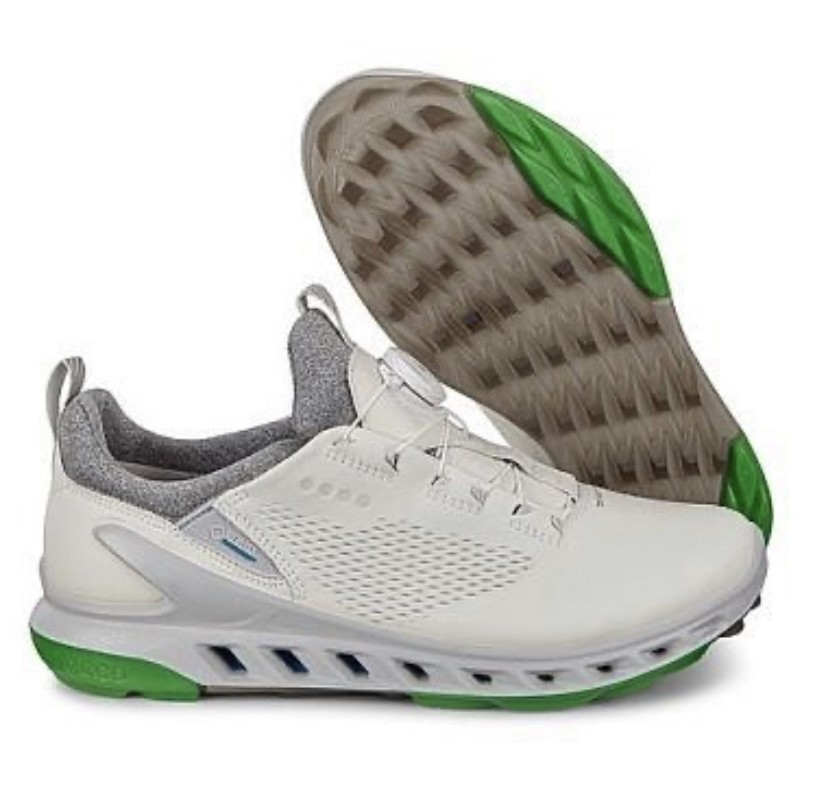How To Clean Your Golf Clubs
One of the most important parts of playing golf is how to take are of your clubs. After all, you use these for every shot, and if the grooves are all dirty it will seriously impact your game. Read below to find out how to clean your golf clubs and how this can improve your golf in 2021.

Does cleaning your golf clubs help?
No matter what level of golfer you are and however much money you will have spent on your set of clubs, you should make sure that you take good care of your clubs. Cleaning your golf clubs can also help your game. You must ensure each part of the club stays in top condition. There’s a golfing buddy I play with who never cleans his clubs, they’re always filed with gunk and dirt, he then wonders why the grooves and shaft begin to rust. If you want your clubs to last a long time, particularly if you’ve spend hundreds on them then read our guide.
Why Clean Your Golf Clubs?
Before we dive into the cleaning process, it’s important to understand why you should clean your golf clubs regularly. The accumulation of dirt, debris, and grass clippings can affect the grooves on your clubface. Dirt buildup can lead to decreased spin, which can negatively impact your shot accuracy and distance. Additionally, moisture and humidity can cause rust and corrosion on your clubs, further decreasing their lifespan.
What You’ll Need
To clean your golf clubs, you’ll need the following items:
- Bucket
- Warm water
- Dish soap or golf club cleaning solution
- Soft-bristled brush or toothbrush
- Clean towel or microfiber cloth
- Groove cleaner (optional)
Step-by-Step Guide
Follow these steps to clean your golf clubs effectively:
Step 1: Fill a Bucket with Warm Water
Fill a bucket with warm water. The water should be warm, but not hot. Hot water can damage the finish on your clubs.
Step 2: Add Soap or Cleaning Solution
Add a small amount of dish soap or golf club cleaning solution to the water. Avoid using harsh chemicals or abrasives, as these can damage your clubs.
Step 3: Soak the Clubs
Place the clubs in the bucket and let them soak for a few minutes. This will help to loosen any dirt or debris on the surface of the clubs.
Step 4: Scrub the Clubs
Using a soft-bristled brush or toothbrush, scrub the clubs gently to remove any dirt or debris. Pay close attention to the grooves on the clubface, as this is where dirt buildup can have the most significant impact on your shot accuracy.
Step 5: Rinse the Clubs
Rinse the clubs thoroughly with clean water to remove any soap or cleaning solution.
Step 6: Dry the Clubs
Using a clean towel or microfiber cloth, dry the clubs thoroughly. Make sure to remove all moisture from the clubs, including the grip and clubhead.
Step 7: Clean the Grooves
Use a groove cleaner to remove any remaining dirt or debris from the grooves on the clubface. This step is optional, but it can help to improve spin and shot accuracy.
Tips for Maintaining Your Clubs
In addition to regular cleaning, there are a few other things you can do to maintain your golf clubs:
- Store your clubs in a cool, dry place to prevent rust and corrosion.
- Use head covers on your clubs to protect them from scratches and dings.
- Avoid hitting the ground with your clubs, as this can damage the clubface and grooves.
Tips on how to clean your Golf Clubs
For all parts of your golf clubs, you can use warm water with a household detergent – washing up liquid is ideal.
1. How to Clean the Golf Head
The golf club head must be kept clean, this is the only part of the club that actually makes contact with the ball. Any dirt or debris in the grooves can affect the strike, even with a putter. Also, if you keep playing with dirt in the grooves, it could even damage them.
In this how to clean your golf clubs guide our advice is that you should ensure that each club head is wiped after your shots. However, routinely you should take time to give your clubs a deeper clean this will improve your golf shots each time with clean grooves clear of debris and dirt.
For the club heads use a soft scrubbing brush with the warm soapy water, gently scrub the clubhead, paying particular attention to those grooves. Rinse the clubhead with clean water, and then dry the head with a soft cloth or towel. This is important; otherwise, you may start seeing rust spots – especially if you’ve owned your clubs for a while.
2. How to Clean the club shaft.
During your round, the most important thing with the metal shafts is to dry them if they’ve got wet. Otherwise, you may find rust spots developing. The other important thing (including graphite shafts) is to wipe them down to remove any grit that may have got on them as you’ve put clubs back into your golf bag. In this complete golf gear guide we want to ensure they don’t get scratched.

3. How to Clean the Grip.
Our advice for how to clean your golf clubs would say that a good condition (and clean) grip should feel slightly ‘tacky,’ especially when you are wearing the right glove. It’s essential to keep your grips in good condition; otherwise the club might slip in your hands during your swing. This could prove disastrous for your golf score. So to improve your golf in 2021 they must be clean and well maintained.
To maintain your grips, again, use warm soapy water but use a scouring pad or stiff brush and give a proper scrub. Rinse them afterwards with clean water and then dry with a towel or leave to air dry.

On a final note about the golf club grips, your grips should be replaced regularly, including your putter grip, depending upon how much you play. If you’re playing 1-2 times a week your grips will probably last up to 12 months, this will take a reasonable amount of practice time into consideration. If you’re playing 3-4 times a week you might need to change your grips after around 6 months. Take this into consideration with how regularly you should change your grips and this will improve your golf.
4. Use a cover for your putter.
In this how to clean your golf clubs guide your ‘woods’ (driver / 3-wood/hybrid woods) will come with covers to protect them, and perhaps your putter will. If it doesn’t, see if you can buy one – you use your putter more frequently than any other club, and you need to protect the club head.
The most important tip for all golfers, listen carefully. Don’t use iron head covers, this is wrong on so many levels, and is a real golf fashion faux pas, just don’t do it!
FAQs
- How often should I clean my golf clubs?
It’s recommended to clean your golf clubs after every round of golf to maintain their performance and lifespan.
- Can I use a wire brush to clean my golf clubs?
No, you should avoid using wire brushes or abrasive materials to clean your golf clubs. These can scratch and damage the finish on your clubs.
- Should I use warm or cold water to clean my golf clubs?
You should use warm water to clean your golf clubs. Cold water may not effectively remove dirt and debris, and hot water can damage the finish on your clubs.
- Can I use a dishwasher to clean my golf clubs?
No, you should not use a dishwasher to clean your golf clubs. The heat and detergent in a dishwasher can damage your clubs.
- How can I prevent rust and corrosion on my golf clubs?
To prevent rust and corrosion on your golf clubs, store them in a cool, dry place, and avoid leaving them in damp environments or in direct sunlight for extended periods. You can also apply a rust inhibitor to the club head periodically to provide extra protection.
Conclusion
The need to have well maintained golf equipment is critical if you want to improve your golf. If you were a football player you would make sure that your boots were clean before playing, in a similar way your clubs should also be cleaned regularly. I hope you have found our guide on how to clean your golf clubs: improve your golf useful. If you have why not check out some of our other articles like the best budget rangefinders, or the best golf balls for beginners.
Fun Golf Equipment Advice
At Fun Golf, we believe that there’s more to golf than just the equipment you use. That’s why we’ve created content that covers a range of topics related to the sport such as how to clean your golf gear. Here are some of our other articles that we think you might find helpful:
- Golf Insurance: Golf can be an expensive sport, and accidents can happen. That’s why we’ve put together a guide to golf insurance, which can help protect you from unexpected costs. Check out our article on golf insurance to learn more.
- Cheap Golf Rangefinders: Rangefinders can be a valuable tool on the golf course, but they can also be expensive. We’ve researched and tested some of the best affordable rangefinders on the market, and put together a guide to help you find the right one for your needs. Check out our article on cheap golf rangefinders to learn more.
- Beginner Golf Balls: If you’re just starting out in golf, choosing the right balls can be confusing. We’ve reviewed some of the best golf balls for beginners, taking into account factors such as distance, spin, and feel. Check out our article on beginner golf balls to learn more.
- Best Golf Trolleys: Carrying your golf bag can be tiring, which is why many golfers opt for a trolley. But with so many options on the market, it can be difficult to know which one to choose. We’ve researched and tested some of the best golf trolleys, and put together a guide to help you make an informed decision. Check out our article on best golf trolleys to learn more.
By exploring these topics, you can improve your overall golfing experience and make the most out of your time on the course. And as always, we at Fun Golf are committed to providing you with accurate and helpful information to help you enjoy the sport to its fullest.




